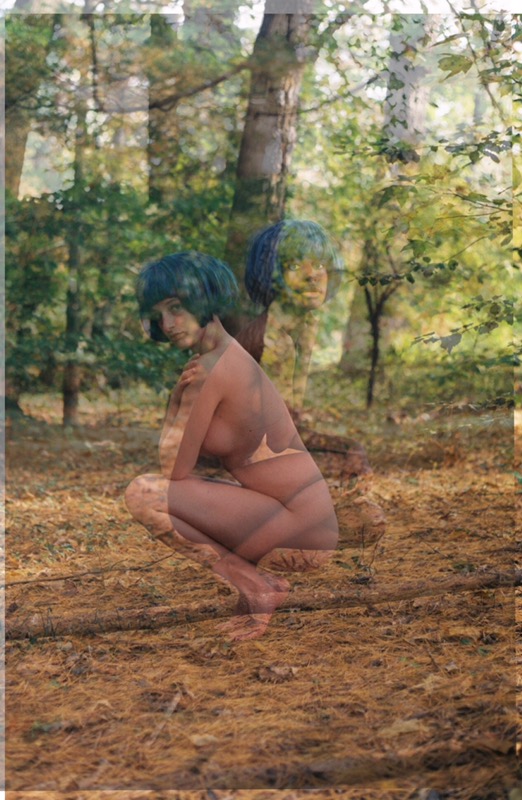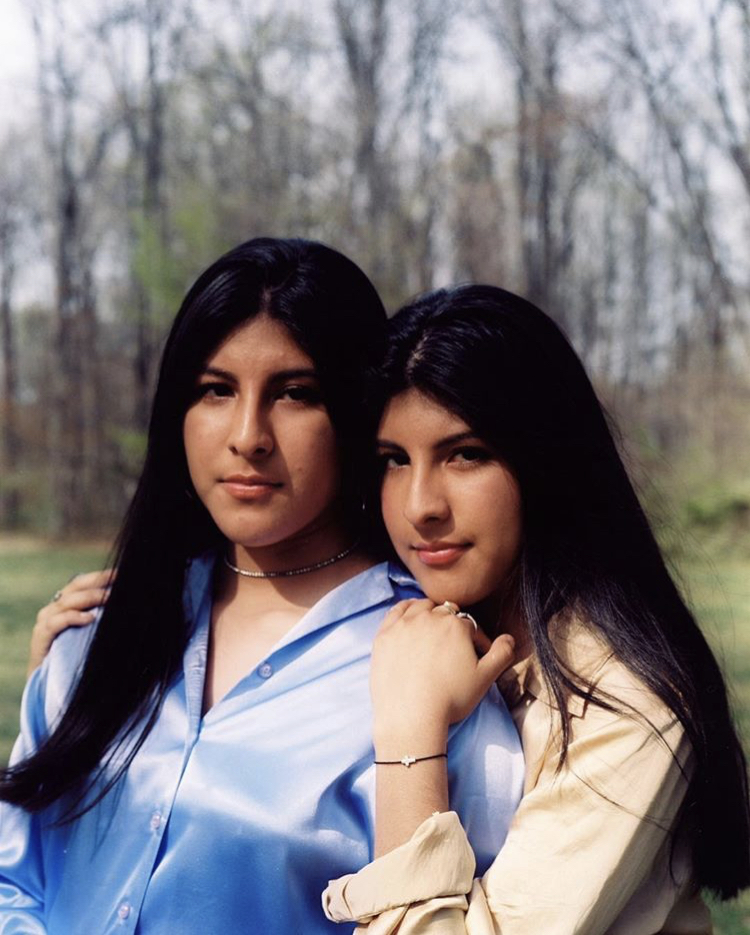Arriving in Chocolate City over a year ago, multi-disciplinary artist Vanessa Dos Santos asked herself, “Where are the people from this area? Where are all the black people?”
Photograph by Vanessa Dos Santos | Flyer by Maxwell Young
The Mozambican-born, D.C. transplant has answered her own question through her photography exhibition, Brother, Where Art Thou? Opening at The Village Cafe this Tuesday, Santos’ portraits focus on a number of black male artists within the District’s creative ecosystem whose work she has come to know and admire. From performance artist Maps Glover to producers Jamal Gray and Tony Cruise, her subjects represent an experimental aspect of black art that is overlooked by those who consume it with mainstream palettes.
“I think oftentimes with black arts, there is an expectancy of the kind of work we put out that can pigeonhole us,” she said. “I feel like a lot of the men I’ve photographed want to push that.”
Santos herself notes a similar compartmentalization of her own narrative. Originally in school for writing, submitting works to publications like Gal-Dem and Napizium, as well as pursuing acting with the National Youth Theater, the 26-year old acknowledges that she is still learning the tricks of the photography trade.
“I think it’s sometimes hard to admit or tell people I do photography because there is such a large influx of photographers. So, if I’m going to tell people I am one I feel like I need to know everything,” she explained.
Regardless of the technicalities involved with her craft, Santos has an eye for composition. She’s recently been toying with edits reminiscent of the double exposure process. In the photo below on the far left, which is actually two separate shots, she captures herself and friend Sami Cola dressed in nothing but wigs, crouched in an unknown grove. The contrast of Santos’ black body overlaid on Cola’s white body is immediately evident, yet their technicolored wigs and their bare exposure to nature allude to this sense of freedom that trumps any symbolism of race.
We asked her about her first upcoming solo exhibition below.
InTheRough: What camera do you shoot with?
Vanessa Dos Santos: I mix between my two cameras: Canon AE-1 and Mamiya 645. For this series I used my Mamiya, which is a medium format camera.
ITR: DC by way of Mozambique...is there anywhere else that you lived that was formative in your creative evolution?
VDS: Every place I lived in has formed my creativity in some way. I feel like my creativity is a huge part of how I understand myself so it’s natural for it to be shaped by the different places I go, if that makes sense. I have lived in New York, Maputo, Berlin, Paris, London and now DC. I think London was the most formative city for me. It’s where I learnt to fail and start again and where I started picking up different things. I was studying writing in school, but acting with the National Youth Theatre, writing for online publications, starting to photograph friends, and work various production jobs.
ITR: Other than their ethnicity, what are the common threads between your subjects?
VDS: Everyone I have photographed does something creative. I have kind of been a wallflower and watched on the side lines some of things people have been doing and admired the tenacity of everyone’s work. Especially because a lot of the artists create sort of experimental work and I think oftentimes with black artists there is an expectancy of the kind of work we put out that can pigeonhole us. I feel like a lot of the men I’ve photographed want to push that. I also think being an artist is to be vulnerable all the time, and I think we don’t think that way about black men very much—as being vulnerable or open.
ITR: Why did you feel compelled to show these series of portraits?
VDS: I wanted to show this work because when I moved to DC I didn’t really know much about the arts community and I also mostly met people from other cities who migrated here. I was asking myself where are the people who are from this area, where are all the black people? This is chocolate city? I guess it was more of not knowing where to look, but I think that also says something that it took me a year to find out about the creative community and the POC who are a part of it.
A portrait of Tony Cruise & an untitled photograph by Vanessa Dos Santos.
ITR: As you look through the lens what are your next proceeding thoughts?
VDS: First I try to make sure my settings are right—technical stuff. When I am photographing someone, I hope to capture an essence of the person. I think about about how I can make them feel comfortable. So, I’m usually thinking what pose can I do to get them to feel a bit more relaxed and not so tense. Then hopefully we can start to feel at ease with each other and we can “play” around a bit.
ITR: Are there any photographers who’s work you follow consistently?
VDS: There are so many photographers that I look to for inspiration: Ronan McKenzie, Rosie Matheson, Travis Matthews, Charlotte Rea, Daniel Arnold, Nakeya Brown to name a few (all you can find on Instagram). I really appreciate photographers that are telling a story through their work. I think a lot of photography we find online is strongly linked to consumerism—and you can find amazing images but it’s about selling something. So I appreciate photographers who tell stories and capture magical moments just because. But I also like cinematographer’s that have a photographer’s eye. I like photos that are cinematic, like they feel like a scene of a film—like there is life before and after the moment you captured.
ITR: You yourself are a self-taught photographer. What aspect(s) of photography are you still learning?
VDS: I’m still learning a lot. Technically, I still make mistakes. I want to learn how to scan my own photos and get back into using a dark room for B&W photography. But I also think I’m learning to trust my own eye, to believe in myself as an artist. I think it’s sometimes hard to admit or tell people I do photography because there is such a large influx of photographers. So, if I’m going to tell people I am one I feel like I need to know everything. I’m trying not to be so hard on myself and enjoy the process of learning and changing.
ITR: What advice would you give to other self-starters?
VDS: The advice I would give to self-starters is to start by asking how to use the camera you have or searching online (Youtube is great). Know your camera and then start shooting as much as you can—first with close friends and family. Then you can shoot people you don’t necessarily know--because if you want to do it professionally, you will have shoot models, couples, weddings, events with people you have never met and it becomes easier for you to figure out how to direct others or to capture moments. I would also say ask other photographers questions, go to photo exhibitions, immerse yourself in the world--but I think that goes with most things you want to pursue.
ITR: Where else can we find your work?
VDS: I’m going to be working on a website for my photography and writing, but for now you can find me on Instagram: @mozwrites. I post everything there but 2019 I want to start actually sending work to publications and taking it more seriously.
Brother, Where Art Thou? by Vanessa Dos Santos is on view at The Village Cafe starting Tuesday evening.
The Village Cafe
1272 5th St, NE
7-10pm
**Photographs taken by Vanessa Dos Santos. The edited image pictured in the carousel was also assisted by Sami Cola.





